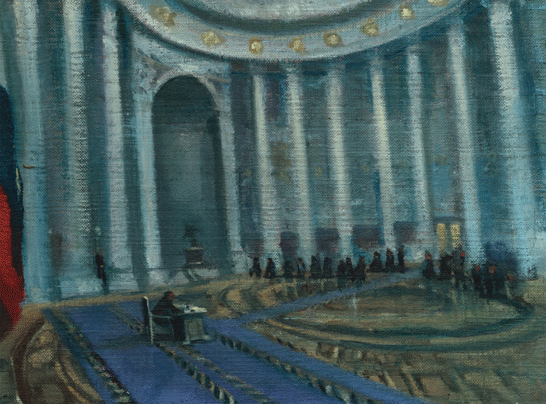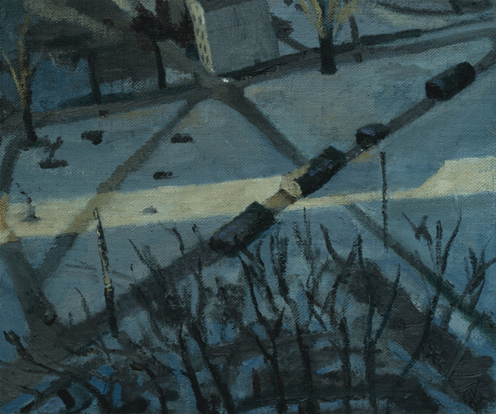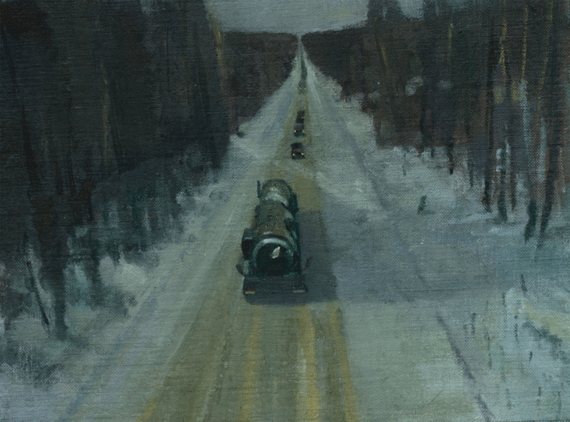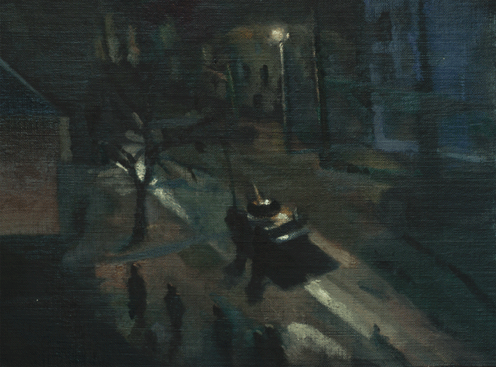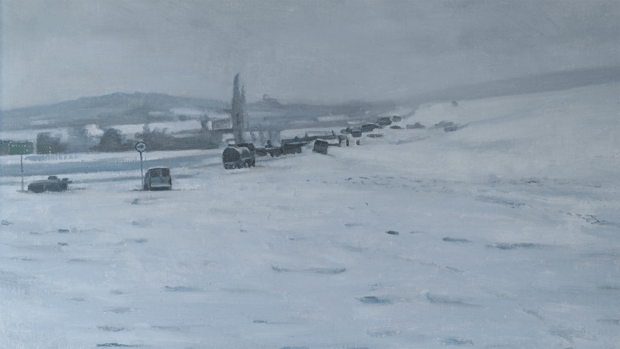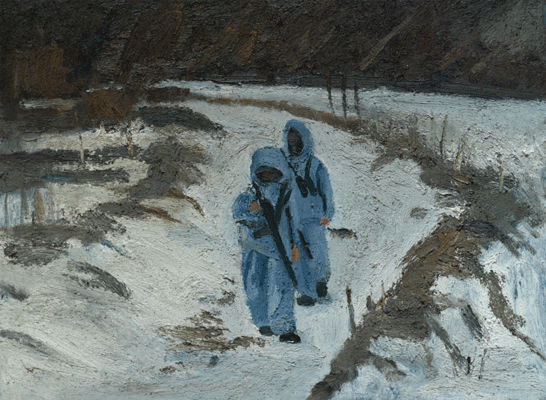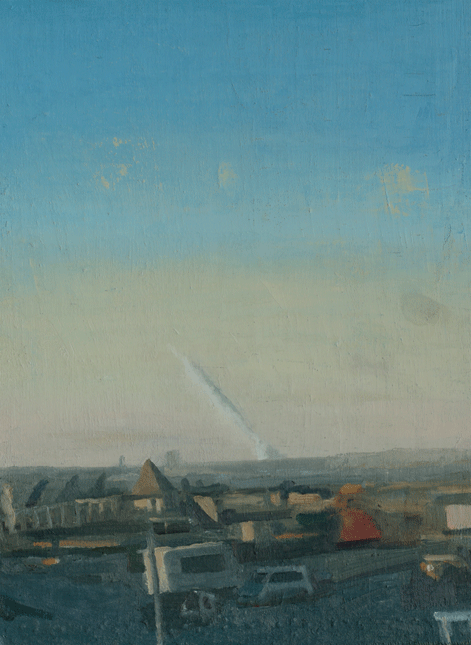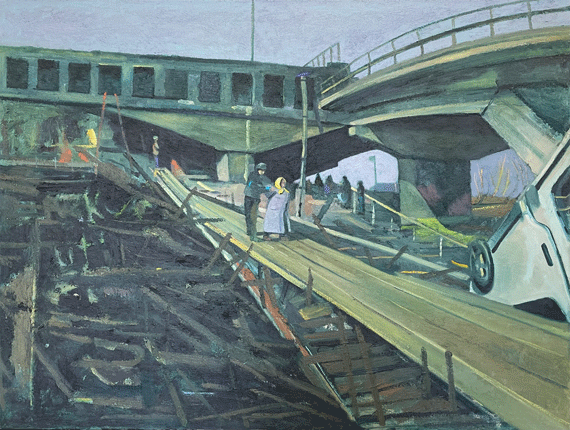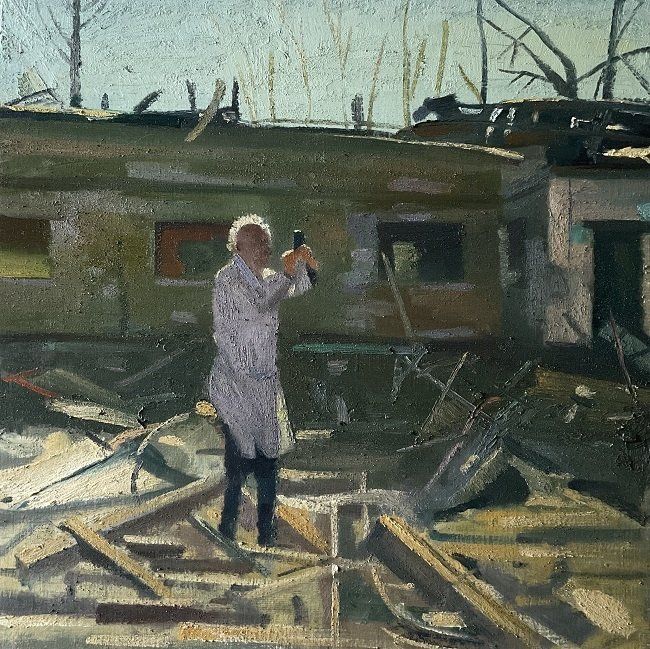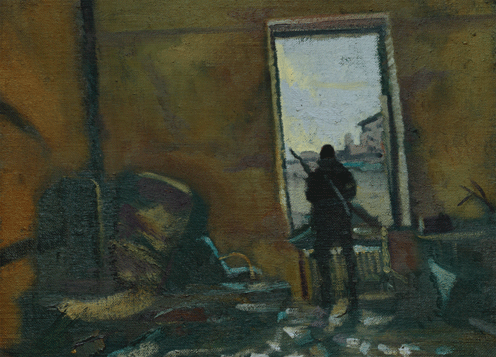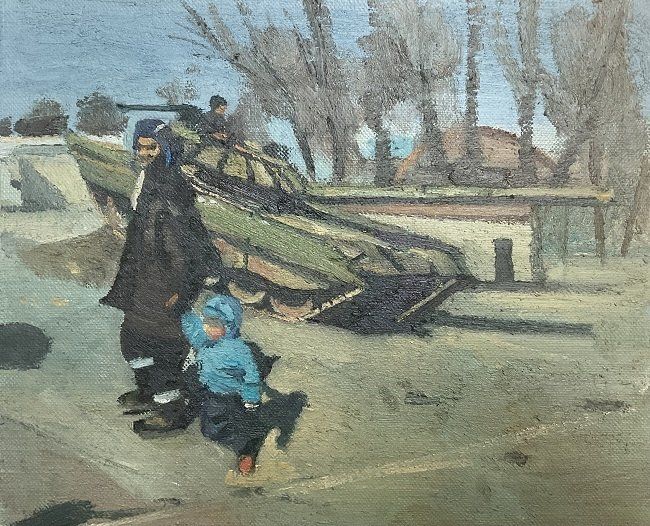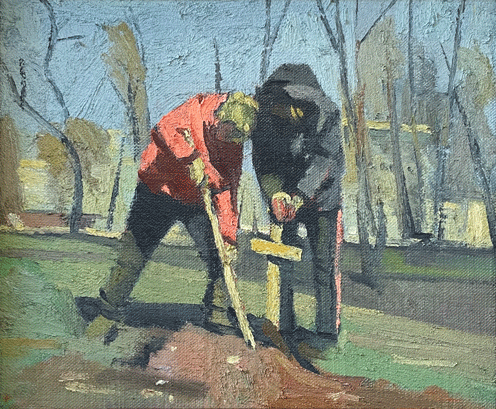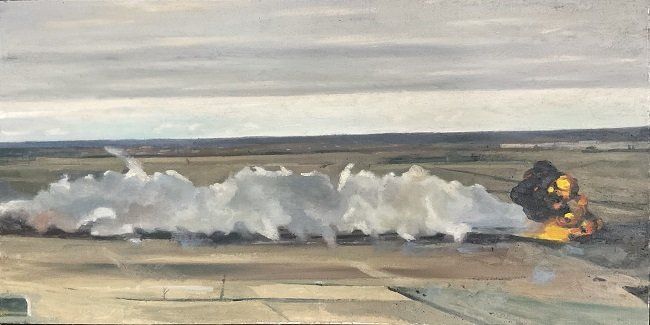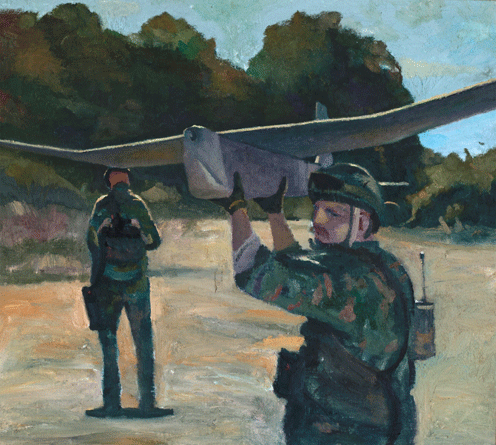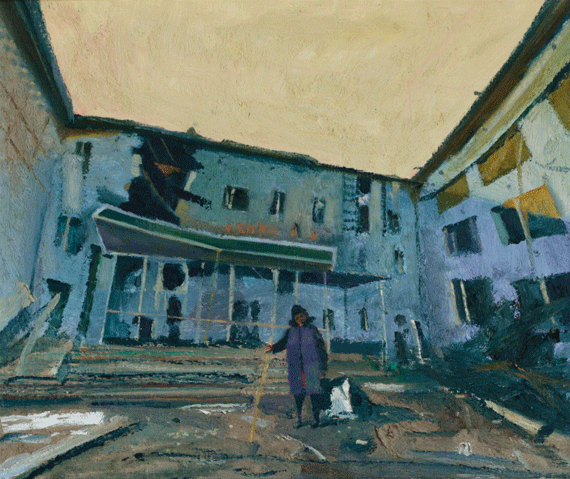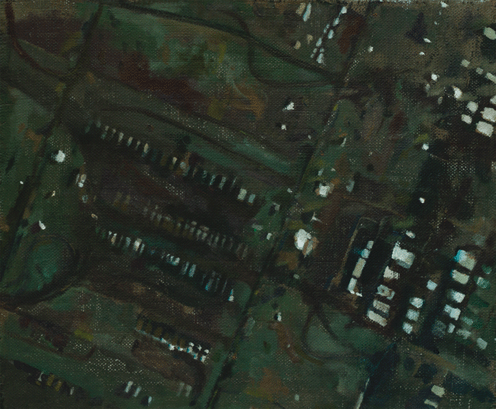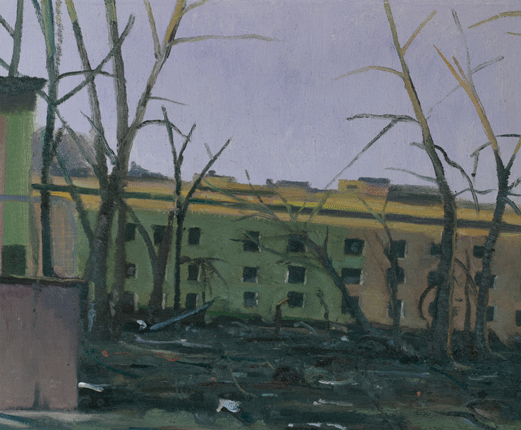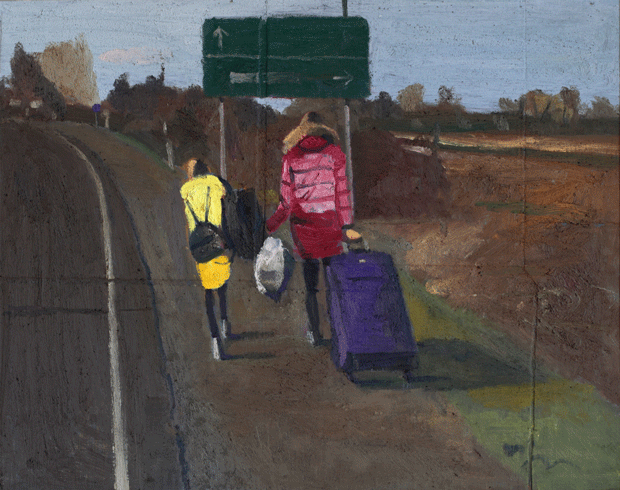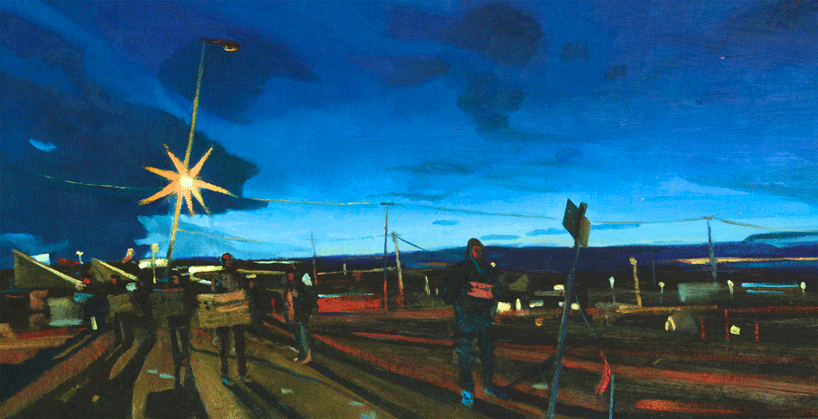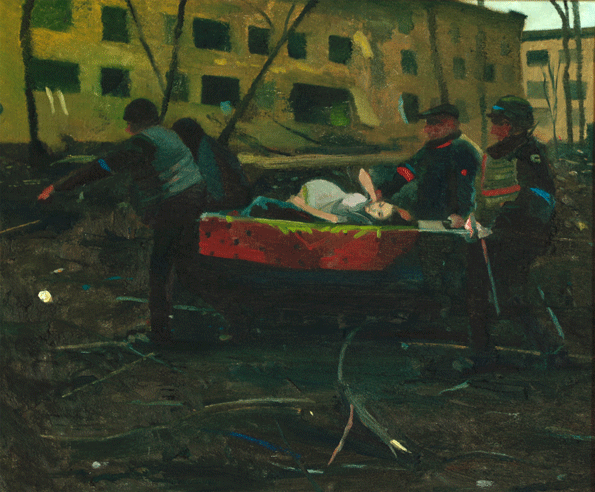War Paint, a solo show by Conrad Frankel, 10 April - 2 May 2022
10 April - 2 May 2022
Solo show
Artist: Conrad Frankel
Launch of the show:
- At the gallery, Sunday 10 April, 3pm in the presence of the artist and Her Excellency Ms Larysa Gerasko, Ambassador of Ukraine to Ireland. Please book a time that suits you by calling/texting or emailing
us. The gallery will be open from 2pm to 6pm.
- On line in our 3D Virtual Space 12 noon on Sunday 10 April 2022.
Availability of the show:
- Tuesdays to Sundays at the gallery from 12 April to 1 May 2022 (please book a time).
- On line in our 3D Virtual Space.
The show will run until 2 May 2022 (instead of 1 May as announced initially).
Please note that 20% of the sales of work from this exhibition will go to the Irish Red Cross to contribute to the Ukraine relief effort.
The online catalogue/price list can be viewed/downloaded here.
Mask-wearing remains recommended in our premises until further notice.
War Paint
The Olivier Cornet Gallery is delighted to present War Paint, Conrad Frankel's third solo exhibition with us.
"For the last few months my mind, like nearly everybody’s, has been occupied with the war in Ukraine. I’ve been checking the news 20 times a day. Since last September I have been working towards my upcoming solo show at the Olivier Cornet Gallery, a series of still lives with phantom like shadows cast by the use of two angle-poise lights. When Russian forces invaded Ukraine two weeks ago and Putin began his ultra-violent smash up in Ukraine, I felt compelled to turn my attention to the war as an artist. I just couldn’t sit and paint still lives anymore. It felt wrong at this time-I had to paint the war, to show the horror of it, the inhumanity of it. I knew this wasn’t going to be a commercial subject matter. However, every day since it began, I’ve chosen an image, mostly from the BBC website, or something similar, and painted it.
By making this group of paintings, I hope to show the war to people afresh. Saturated, jaded by online media, I wanted to make paintings of the images we all see and know, and too quickly forget. Images that would resonate deeper by virtue of them being reimagined and abstracted in paint.
I usually just use regular Windsor and Newton oil paint and whatever lead white I can buy. For this series I wanted to use something different to express the bleakness of the situation. I got some very fine sand from the owner of Athy foundry, and mixed it with a cold wax medium called Zest it, and another medium called Velasquez medium which is limestone based. To that mound of matter, I added my colours. The piles of paint I used were the size of golf balls, and very gritty because of the sand. It all crunched under my palette knives. It felt right when painting a convoy or a bombed maternity hospital to be using such rough stuff. The skies I made look like they have been painted with cement. The images are hewn from a slimy grit and the brushes and palette knives have been wearing down faster than usual. The experience is about the presence of things, a broken and bald world.
Having studied the press photos of the war closely I’ve realised that one war is ten million wars. So many actions happen to so many people in so many places that it’s very hard to fathom what a war is. We can’t imagine what’s really happening even if we see the images online. We forget the news so quickly. Dasein was Heidegger’s word for ‘being there’ or the experience of being that is particular to humans. In my paintings for this show I hope to take people into the icy convoys sliding off the snowy highway, up the road with the fleeing families lugging their wheely suitcases, and into a night group of hitchhikers hoping to get a lift away. I want to do something deeper with the news I can’t stop looking at. To make it real in paint. To be there just a bit closer, and show how many places people are stuck in. With three weeks left I am working away every day, towards a show, and like many people, with an existential dread of what is to come before the show…"
Conrad Frankel
--
Creagh Castle, Doneraile, Co. Cork
Coverage/Reviews/quotes:
'Here's how you can help the Ukraine aid effort by buying art', The Art Newspaper, 10 March 2022
'Artistic License: Conrad Frankel', Penny McCormick, The Gloss, 30 March 2022
'Artists come together to raise money for Ukraine', Elizabeth Birdthistle, The Irish Times, 2 April 2022
'Art Supports', Gemma Tipton, The Irish Times Magazine, 2 April 2022
'Painting War: Conrad Frankel’s Solo Show for Ukraine Relief Effort', Louisa Celine Klatt, Radius, University Times, 4 April 2022
'4 Irish Initiatives To Support Ukraine This Week', Penny McCormick, The Gloss, 5 April 2022
“Art is probably the best way to deliver information to society and inspire people to resist Russia in all possible ways”.
Larysa Gerasko, Ambassador of Ukraine to Ireland, on opening the exhibition on 10 April 2022.
Larysa Gerasko, Ambassador of Ukraine to Ireland, on opening the exhibition on 10 April 2022.
'On Show, Two to View', Niall MacMonagle, Arts & Theatre, The Independent, 10 April 2022
"Conrad Frankel has been "checking the news 20 times a day" during the war in Ukraine. Working towards an exhibition of still lifes, the horror of war compelled Frankel to change course. He turned his attention to Vladimir Putin's "ultra-violent smash-up and these new paintings, "hewn from a slimy grit", are deliberately and appropriately presented in distressed frames."
'Your guide to the top exhibitions currently taking place around the country this week', Ros Drinkwater, Fine Arts: Events calendar, Business Post, 10 April, 24 April and 1 May 2022.
"The most engaged art exhibition with the Ukrainian situation currently in Dublin". David Devitt (of NIVAL) during his visit to the show on 12 April 2022.
'Focus on war is waning amid maelstrom of social media', Colin Murphy, The Sunday Independent, Opinion (page 21), 17 April 2022
"...And then Putin invaded Ukraine. Frankel abandoned the project, immersed himself in the imagery of the conflict and painted an entirely new exhibition..."

